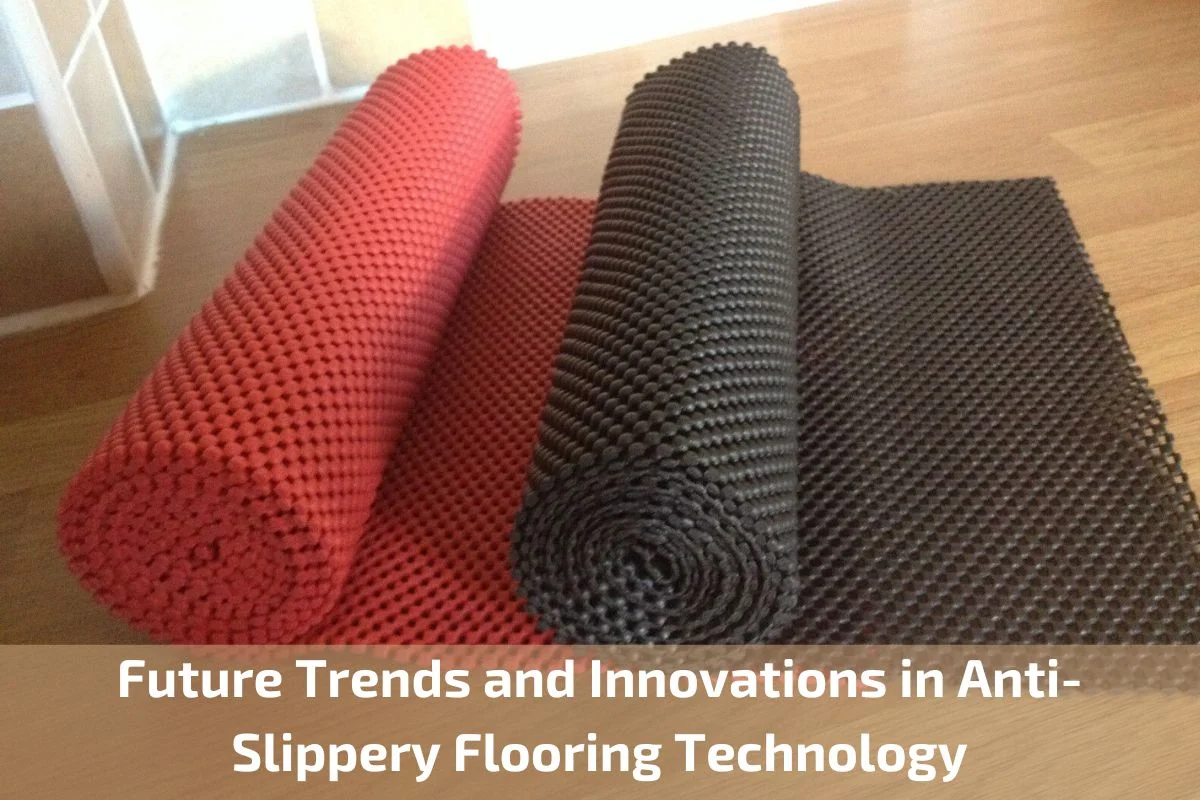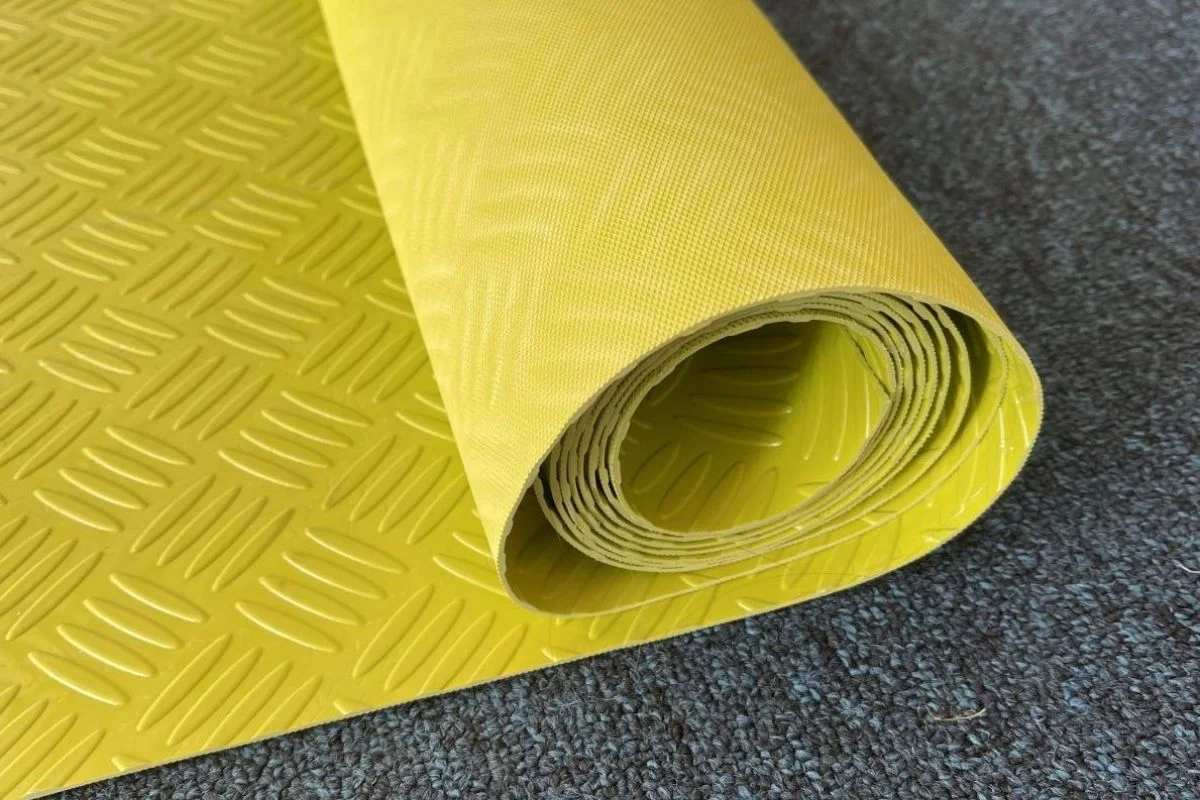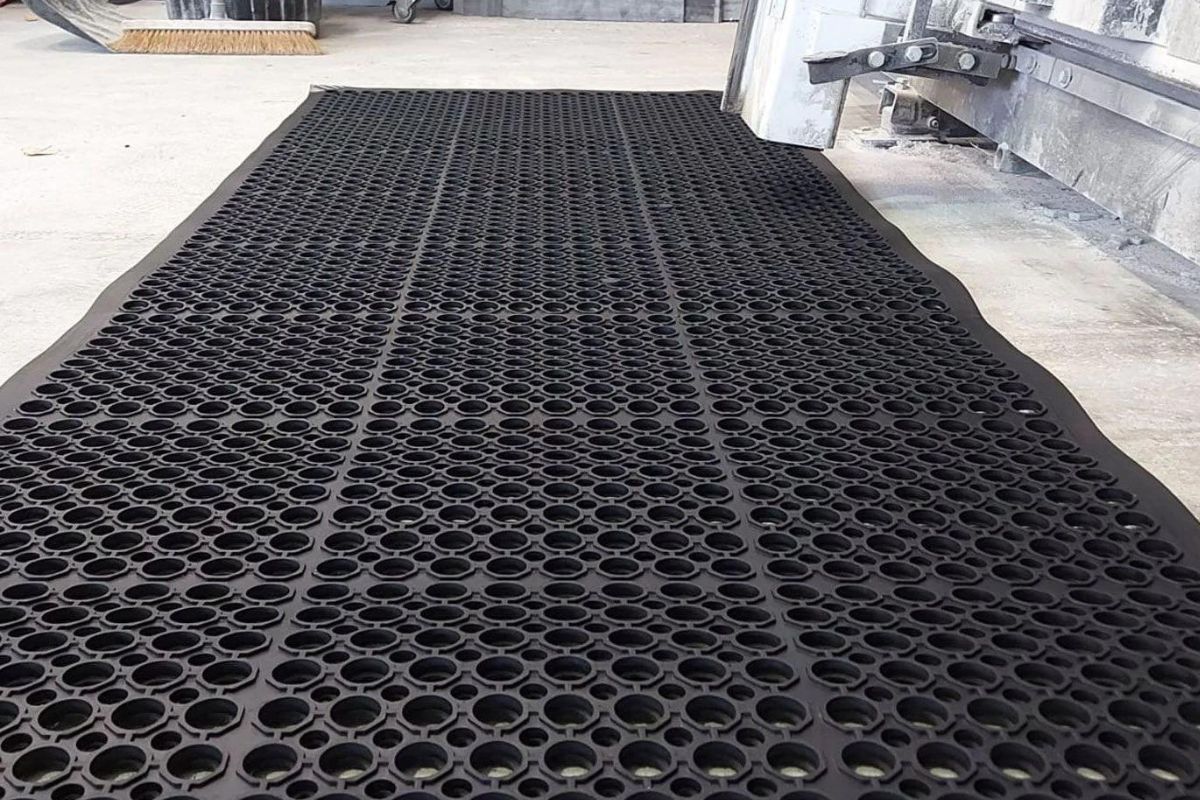Unveiling the Safety Benefits of Anti-Slip Matting
In the hustle and bustle of everyday life, safety often takes precedence in our minds, whether at home, in the workplace, or in public spaces. Among the myriad of safety measures, anti-slip matting emerges as a simple yet highly effective solution to mitigate the risks of slips, trips, and falls.
In this article, we delve into the safety benefits of anti-slip matting, shedding light on its significance in various environments. From residential homes to industrial facilities, the presence of anti-slip matting plays a pivotal role in enhancing safety and reducing accidents.
Join us as we uncover the multifaceted advantages of anti-slip matting, exploring its role in promoting security, preventing injuries, and fostering peace of mind for individuals of all ages and abilities. Let’s embark on a journey to understand how this seemingly modest accessory can make a profound difference in ensuring safety in our everyday lives.
Overview of Anti-Slip Matting
Anti-slip matting is a specialized type of flooring accessory designed to enhance safety and reduce the risk of slips, trips, and falls in various environments. Unlike traditional floor coverings, which may become slippery when wet or exposed to oils and other substances, anti-slip matting incorporates features that improve traction and grip underfoot.
The primary purpose of anti-slip matting is to provide a secure footing for individuals walking or standing on surfaces that are prone to slip hazards. This includes areas such as kitchens, bathrooms, entryways, industrial workstations, and public spaces where moisture, spills, or slick surfaces may pose safety risks.
Anti-slip matting is typically made from durable materials such as rubber, vinyl, or carpet fibers, which are engineered to withstand heavy foot traffic and maintain their slip-resistant properties over time. These materials are selected for their ability to provide traction and grip, even in wet or slippery conditions.
Anti-slip matting comes in a variety of forms, including mats, rugs, runners, and tapes, each designed to suit different applications and environments. Mats and rugs are commonly used in residential settings to cover specific areas prone to slips, such as in front of sinks, showers, or entry doors. Runners are long, narrow mats often used in hallways, corridors, or industrial walkways to provide continuous slip resistance along pathways. Anti-slip tapes are adhesive strips applied directly to flooring surfaces to create non-slip pathways or highlight potential hazards.
The effectiveness of anti-slip matting is determined by several factors, including the material composition, surface texture, and slip resistance rating. Many anti-slip mats undergo testing to evaluate their slip resistance according to standardized protocols and safety standards.
In addition to enhancing safety, anti-slip matting offers other benefits, such as durability, ease of maintenance, and aesthetic appeal. Many anti-slip mats are designed with drainage channels or raised patterns to allow liquids to flow away from the surface, reducing the risk of standing water and moisture buildup.
Definition and Functionality of Anti-Slip Matting
Anti-slip matting is a specialized type of flooring accessory designed to enhance safety and reduce the risk of slips, trips, and falls in various environments. It serves as a protective barrier between individuals and potentially hazardous surfaces, providing an additional layer of traction and grip underfoot.
The primary functionality of anti-slip matting lies in its ability to create a stable and secure footing on surfaces that are prone to slip hazards. It achieves this by incorporating features such as textured surfaces, raised patterns, and specialized materials that enhance friction and grip.
Anti-slip matting is commonly used in areas where moisture, spills, or slick surfaces pose safety risks, such as kitchens, bathrooms, entryways, industrial workstations, and public spaces. By providing a non-slip surface, anti-slip matting helps individuals maintain their balance and stability while walking, standing, or performing tasks.
One of the key features of anti-slip matting is its slip-resistant properties, which are achieved through the selection of appropriate materials and surface designs. Materials such as rubber, vinyl, or carpet fibers are chosen for their ability to provide traction and grip, even when exposed to water, oils, or other substances.
The functionality of anti-slip matting extends beyond slip resistance to include other important attributes, such as durability, ease of maintenance, and aesthetic appeal. Many anti-slip mats are designed with features such as drainage channels, perforations, or anti-fatigue properties to enhance performance and user comfort.
Anti-slip matting comes in a variety of forms, including mats, rugs, runners, and tapes, each tailored to suit different applications and environments. Mats and rugs are commonly used in residential settings to cover specific areas prone to slips, while runners are ideal for longer pathways or corridors. Anti-slip tapes are often applied directly to flooring surfaces to create non-slip pathways or highlight potential hazards.
In summary, anti-slip matting serves as a critical safety measure in preventing accidents and injuries caused by slips and falls. Its functionality lies in providing a stable and secure footing on potentially hazardous surfaces, thereby creating safer and more comfortable environments for individuals of all ages and abilities
The Safety Benefits of Anti-Slip Matting
Anti-slip matting offers a range of safety benefits that contribute to creating secure environments and reducing the risk of slips, trips, and falls. Its effectiveness in enhancing safety is evident across various settings, from residential homes to commercial establishments and industrial facilities. Let’s explore the key safety benefits of anti-slip matting:
- Prevention of Slips and Falls: The primary safety benefit of anti-slip matting is its ability to reduce the risk of slips and falls. By providing enhanced traction and grip underfoot, anti-slip mats help individuals maintain their balance and stability, even on wet or slippery surfaces. This significantly reduces the likelihood of accidents and injuries, particularly in areas prone to moisture or spills.
- Protection for Individuals of All Ages and Abilities: Anti-slip matting is designed to provide a secure footing for individuals of all ages and abilities. From young children to the elderly, anti-slip mats offer a level of safety and reassurance, allowing individuals to navigate their surroundings with confidence and peace of mind. This inclusive approach to safety promotes accessibility and independence for everyone.
- Compliance with Safety Regulations and Standards: Many industries and jurisdictions have specific safety regulations and standards governing slip resistance requirements for flooring materials. Anti-slip matting helps ensure compliance with these regulations by providing the necessary level of traction and grip to prevent accidents. By adhering to safety standards, property owners and managers mitigate liability risks and demonstrate their commitment to safety.
- Contribution to Peace of Mind: The presence of anti-slip matting contributes to a sense of security and peace of mind for occupants and visitors alike. Knowing that measures have been taken to minimize slip hazards and enhance safety fosters a positive and welcoming environment. Whether at home, in the workplace, or in public spaces, anti-slip matting promotes confidence and reassurance.
- Reduction of Accident-Related Costs: Slip and fall accidents can result in costly medical expenses, insurance claims, and legal liabilities. By investing in anti-slip matting, property owners and managers can mitigate the risk of accidents and reduce the associated financial burdens. The upfront cost of installing anti-slip mats is outweighed by the long-term savings and benefits of accident prevention.
- Enhanced Safety Culture: Incorporating anti-slip matting into safety protocols and initiatives fosters a culture of safety within organizations and communities. By prioritizing safety and implementing effective safety measures, employers, businesses, and institutions demonstrate their commitment to protecting the well-being of their stakeholders. This proactive approach to safety promotes a positive and supportive environment for all.
Exploring Different Types of Anti-Slip Matting Materials
Anti-slip matting comes in various materials, each offering unique properties and benefits to enhance safety and prevent slips and falls. Understanding the characteristics of different types of anti-slip matting materials is crucial for selecting the most suitable option for specific applications. Let’s explore some of the common types of anti-slip matting materials:
- Rubber Anti-Slip Matting: Rubber is one of the most popular materials used in anti-slip matting due to its excellent traction and durability. Rubber mats offer a high level of slip resistance, even in wet or oily conditions, making them ideal for environments prone to moisture or spills. Additionally, rubber anti-slip matting is resilient, easy to clean, and resistant to wear and tear, making it suitable for both indoor and outdoor use.
- Vinyl Anti-Slip Matting: Vinyl anti-slip matting is another common option known for its versatility and affordability. Vinyl mats are available in various thicknesses and textures, offering slip resistance and comfort underfoot. They are often used in commercial settings such as kitchens, restaurants, and retail stores, where aesthetics and durability are essential considerations. Vinyl anti-slip matting is easy to install, clean, and maintain, making it a practical choice for high-traffic areas.
- Carpeted Anti-Slip Matting: Carpeted anti-slip matting combines the softness and comfort of carpet fibers with the slip-resistant properties of rubber backing. These mats feature a carpeted surface that provides warmth and insulation while preventing slips and falls. Carpeted anti-slip matting is commonly used in indoor environments such as entryways, hallways, and offices, where safety and aesthetics are equally important. They are available in a variety of colors and patterns to complement existing decor.
- Specialty Anti-Slip Matting: Specialty anti-slip matting encompasses a wide range of materials and designs tailored to specific applications and environments. This includes anti-fatigue mats for reducing strain and fatigue in industrial settings, drainage mats for wet or oily areas, and electrical safety mats for protecting against electrical hazards. Specialty anti-slip matting is designed to meet the unique needs and challenges of different industries and environments, providing customized solutions for enhanced safety.
- Modular Anti-Slip Tiles: Modular anti-slip tiles offer a customizable and flexible solution for creating non-slip surfaces in various settings. These interlocking tiles can be easily assembled and installed to cover large areas or irregularly shaped spaces. Modular anti-slip tiles are often used in industrial facilities, garages, and workshops, where heavy-duty traction and durability are required. They are resistant to chemicals, oils, and abrasion, making them suitable for demanding environments.
Maintenance Tips to Anti-Slip Matting
Maintaining anti-slip matting is essential to ensure its longevity, effectiveness, and continued slip resistance. Proper maintenance practices help preserve the integrity of the matting material and optimize its performance in preventing slips and falls. Here are some maintenance tips to keep your anti-slip matting in optimal condition:
- Regular Cleaning: Establish a routine cleaning schedule for your anti-slip matting to remove dirt, debris, and contaminants that can accumulate on the surface. Use a broom, vacuum cleaner, or hose to remove loose particles and debris from the matting regularly.
- Use Mild Cleaning Solutions: When cleaning anti-slip matting, use mild detergents or soap solutions diluted in water. Avoid harsh chemicals, bleach, or abrasive cleaners, as they can damage the surface and reduce slip resistance over time. Test any cleaning solution on a small, inconspicuous area of the matting before applying it to the entire surface.
- Scrubbing and Brushing: For stubborn stains or residues, gently scrub the surface of the anti-slip matting with a soft-bristled brush or sponge. Use circular motions to lift and remove dirt and stains without damaging the material. Rinse the matting thoroughly with clean water to remove any soap residue.
- Avoid Standing Water: Prevent water from pooling or accumulating on the surface of the anti-slip matting, as it can compromise slip resistance and promote mold or mildew growth. Promptly dry the matting after cleaning or exposure to moisture using a towel, mop, or air-dryer.
- Inspect for Damage: Regularly inspect the anti-slip matting for signs of wear, tear, or damage, such as fraying edges, tears, or cracks. Address any issues promptly to prevent further deterioration and maintain the effectiveness of the matting in preventing slips and falls.
- Replace Worn-Out Matting: As anti-slip matting ages, it may lose its effectiveness in providing slip resistance and safety. Monitor the condition of the matting regularly and replace worn-out or damaged sections as needed. Investing in new anti-slip matting ensures optimal safety and performance for your space.
- Consider Anti-Fatigue Matting: In environments where individuals stand for prolonged periods, such as kitchens or workstations, consider using anti-fatigue matting alongside anti-slip matting. Anti-fatigue mats provide cushioning and support to reduce fatigue and discomfort, enhancing comfort and productivity.
- Follow Manufacturer’s Guidelines: Consult the manufacturer’s recommendations and guidelines for cleaning and maintenance specific to your anti-slip matting. Follow any instructions provided by the manufacturer to ensure proper care and preservation of the matting material.
Conclusion
In conclusion, anti-slip matting plays a crucial role in enhancing safety and preventing slips, trips, and falls in various environments. Through its slip-resistant properties and durable construction, anti-slip matting provides a secure footing for individuals of all ages and abilities, promoting confidence and peace of mind.





0 comments